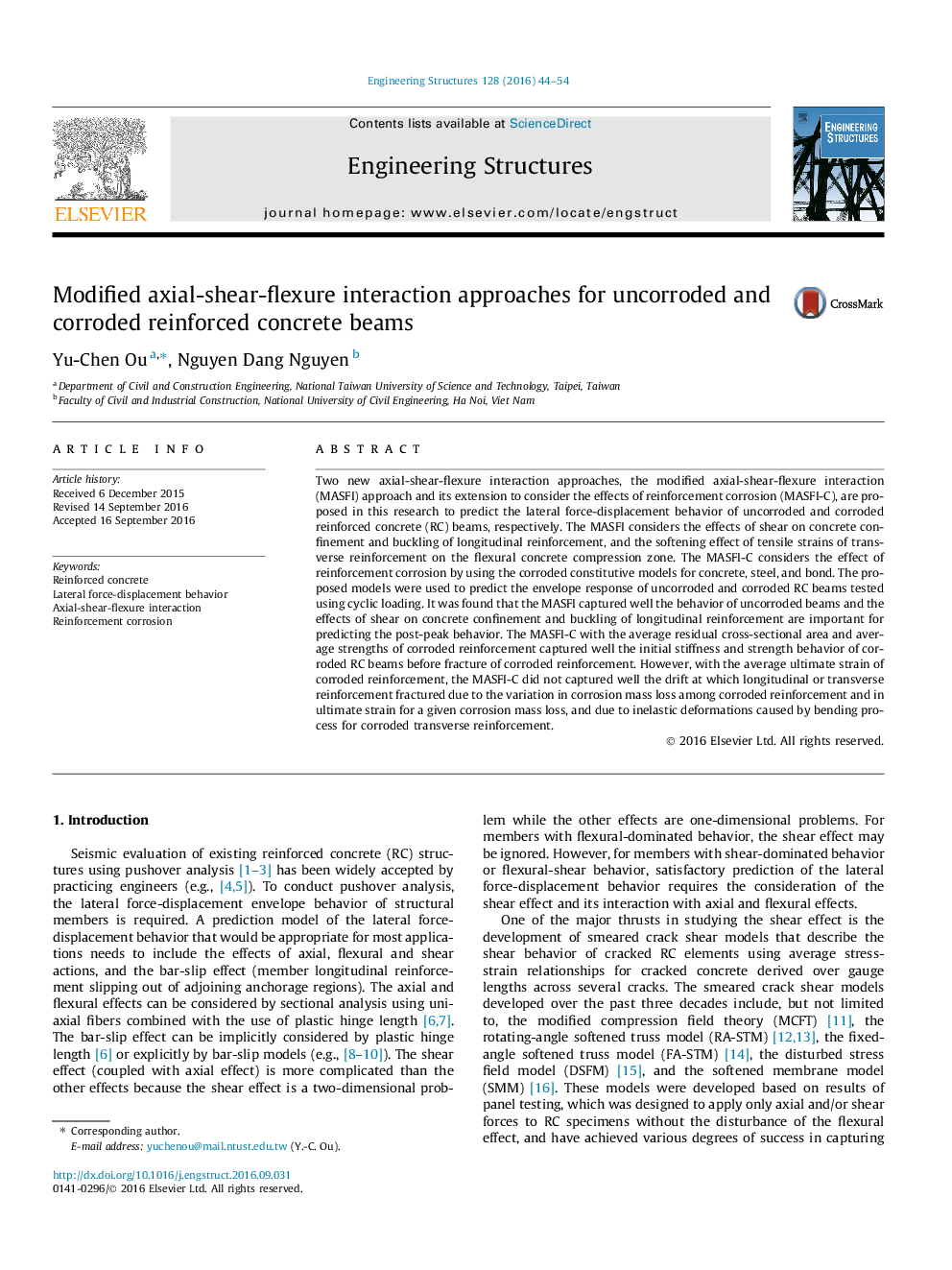| Article ID | Journal | Published Year | Pages | File Type |
|---|---|---|---|---|
| 4920709 | Engineering Structures | 2016 | 11 Pages |
Abstract
Two new axial-shear-flexure interaction approaches, the modified axial-shear-flexure interaction (MASFI) approach and its extension to consider the effects of reinforcement corrosion (MASFI-C), are proposed in this research to predict the lateral force-displacement behavior of uncorroded and corroded reinforced concrete (RC) beams, respectively. The MASFI considers the effects of shear on concrete confinement and buckling of longitudinal reinforcement, and the softening effect of tensile strains of transverse reinforcement on the flexural concrete compression zone. The MASFI-C considers the effect of reinforcement corrosion by using the corroded constitutive models for concrete, steel, and bond. The proposed models were used to predict the envelope response of uncorroded and corroded RC beams tested using cyclic loading. It was found that the MASFI captured well the behavior of uncorroded beams and the effects of shear on concrete confinement and buckling of longitudinal reinforcement are important for predicting the post-peak behavior. The MASFI-C with the average residual cross-sectional area and average strengths of corroded reinforcement captured well the initial stiffness and strength behavior of corroded RC beams before fracture of corroded reinforcement. However, with the average ultimate strain of corroded reinforcement, the MASFI-C did not captured well the drift at which longitudinal or transverse reinforcement fractured due to the variation in corrosion mass loss among corroded reinforcement and in ultimate strain for a given corrosion mass loss, and due to inelastic deformations caused by bending process for corroded transverse reinforcement.
Related Topics
Physical Sciences and Engineering
Earth and Planetary Sciences
Geotechnical Engineering and Engineering Geology
Authors
Yu-Chen Ou, Nguyen Dang Nguyen,
